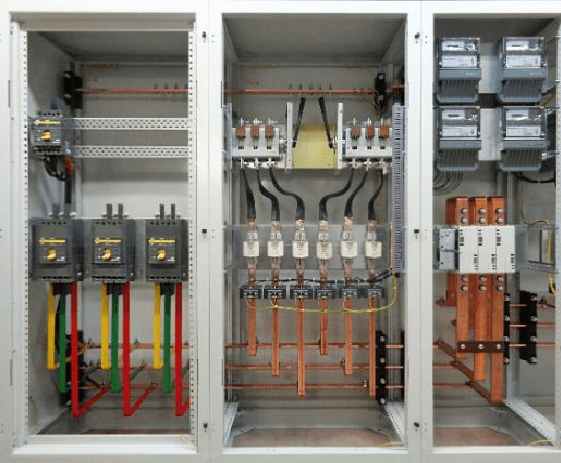On November 16, 2021, started a public discussion of two draft of the amendments to CU TR 004/2011 "On the safety of low-voltage equipment" and CU TR 020/2011 "Electromagnetic compatibility of technical devices".
Updating technical regulations consists in establishing forms, schemes and conformity assessment procedures based on standard conformity assessment schemes approved by the decision of the Council of the Eurasian Economic Commission No. 44 of April 18, 2018.
It is important to note that in the draft amendments the procedures of declaration and certification have been separated (Article 8 and 9) for the more convenience. In the current edition of the regulations, such processes were described in one article. In the draft of the amendments, all stages of certification and declaration of equipment are outlined in more detail, the required sets of documents are indicated and the need for a verification of production is specified, based on the selected scheme.
In connection with the changes in the articles of the regulations, art. 8 (marking with the EAC sign) and 9 (protective clause) of the current editions of CU TR 004/2011 and CU TR 020/2011 will be considered Art. 10 and 11, respectively.
The proposed changes for both regulations are identical. Their key changes are highlighted below.
Updating the terminology of CU TR 004/2011 and CU TR 020/2011
First of all, in Art. 2 "Definitions" of both regulations, it is planned to add an indication that for the purposes of their application, the definitions are used established by the Protocol on Technical Regulation within the Eurasian Economic Union (Appendix No. 9 to the Treaty on the EAEU dated May 29, 2014) and the standard conformity assessment schemes approved by the Decision of the EEC Council No. 44 of April 18, 2018. In addition, the existing list of definitions is also updated: a new term "standard sample" is added, and the following are excluded: "manufacturer"; "importer" and "entity authorized by the manufacturer" (Applicant - CCIS).
Ensuring compliance with the norms of CU TR 004/2011 and CU TR 020/2011
The draft of the amendments to the CU TR 004/2011 and CU TR 020/2011 set out in more detail the requirements for ensuring compliance with the requirements of the regulations (Article 6 of the regulations). It is proposed to clearly indicate that a voluntary fulfillment of the requirements of the standards included in the list of standards ensures the compliance of the equipment with the regulations.
For the first time in the draft of the amendments, it is possible to use test reports and certificates issued within the framework of international certification systems (Article 7 of the regulations) as evidence. This applies to the conformity assessment of equipment used in infrastructure and investment projects, reconstruction of the existing industries and construction of new ones.
Updating the procedure for EAC certification of the equipment
One of the important changes proposed in the amendment drafts is the introduction of the certification scheme "9c" in addition to the existing 1c, 3c and 4c.
Scheme 9c is applicable to single items intended for equipping enterprises on the territory of the Eurasian Union (hereinafter EAEU).
Additionally, certification of equipment will be required if applicant's own evidence is absent or considered insufficient. Currently this provision applies only to equipment that is not produced according to the requirements of standards from the list to regulations.
The certification process is outlined in more details, depending on the chosen scheme. For example, it is clearly established that for certification under scheme 1c, the certification body has to periodically assess the certified equipment during the validity period of the certificate once every 18 months. Evaluation is carried out by testing and measuring samples in an accredited testing laboratory (except for cases specified in the regulations) and / or in the form of an analysis of the state of production. It is also indicated that for the equipment for which the certificate is issued for a period of less than 18 months, periodic assessment may not be carried out. In case of negative results of the verification of production sitet, the certification body has the right to suspend or terminate the certificate. A corresponding entry is made about this in the unified register of certificates of conformity.
A separate paragraph is devoted to defining the range of applicants for equipment certification. An Applicant is a legal entity or individual (individual entrepreneur) registered in the EAEU, which is:
- a manufacturer / person authorized by the manufacturer - in the case of serial production of the equipment;
- a seller / importer - when releasing a batch of equipment or a single item.
Updating the procedure for EAC declaration of equipment
Regarding the declaration of conformity, the schemes do not change, the following schemes will continue to be implemented: 1d, 2d, 3d, 4d or 6d.
The draft amendments also set out in more detail the procedure for registering declarations of conformity for equipment, based on the selected scheme. For example, there are cases during the procedure of declaration where testing of samples is not required. Firstly, it refers to the cases where the documents supplied are issued within the framework of international certification systems. Secondly, testing can be abandoned when choosing schemes 2d or 4dunder condition that applicant established the equality of a product batch or a single product with the equipment for which a declaration of conformity was previously registered. In this case, former test reports are used for declaration. However, this is only possible if no more than 2 years have elapsed from the date of approval of the test reports and provided that there are no changes in the technical requirements in according with which the tests were carried out.
Entry into force of amendments to CU TR 004/2011 and CU TR 020/2011
At the moment, the draft decisions of the EEC Council have established that the new version of CU TR 004/2011 and CU TR 020/2011 will enter into force after 180 calendar days from the date of the official publication of decisions on their adoption. Public discussion on both draft amendments should end on January 30, 2022.
















